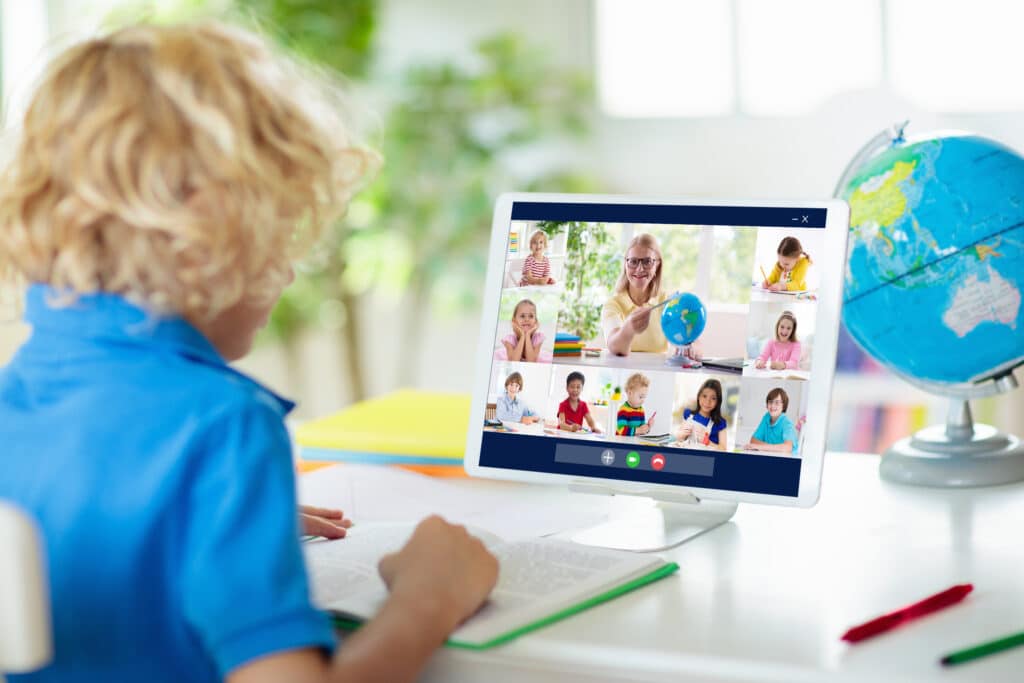
As we move deeper into the 21st century, the traditional chalk-and-talk model of education is gradually evolving. The rise of digital technology has brought about transformative changes in nearly every industry, and the education sector is not exempt. This rapid and profound change has led to the introduction of technology in classrooms, transforming the learning process into an interactive, engaging, and customized experience. There are innumerable ways we can leverage technology in the classroom, thereby enhancing student learning and preparing them for the future.
An innovative approach to teaching that has emerged with the advent of technology is the concept of a ‘flipped classroom.’ In this model, students independently review online lectures, and classroom time is dedicated to collaborative work and teacher guidance. Programs with flipped curriculums have seen a significant decrease in failure rates and a notable increase in student engagement. This approach allows students to guide their own learning process, fostering critical thinking and self-directed learning skills.
Building Infrastructure: Telecommunications companies can assist in setting up and maintaining the necessary infrastructure for technology use in schools, such as Wi-Fi networks, VoIP systems, and data centers. This infrastructure supports the smooth running of digital classrooms.
Additionally, technology facilitates personalized learning paths for students. Learning management systems (LMS), like Canvas, Blackboard, or Moodle, enable teachers to customize lessons based on each student’s pace and understanding. “With technology, we can offer a learning pace suitable for every student, ensuring that everyone is supported.,” says Alex Bravo, an experienced higher education teacher and edtech advocate.
Digital Platforms and Tools: Telecommunications companies can provide digital platforms and tools that enhance learning. This could include learning management systems (LMS), virtual collaboration tools, or platforms for online courses and digital assessments.
Collaborative work, a crucial skill in today’s interconnected world, is significantly enhanced through technology. Web-based tools like Google Docs, Microsoft Teams, or OneCloud Meet, allow students to work on projects together, irrespective of their physical location. A study by Stanford University found that technology-facilitated collaboration improved students’ problem-solving skills and boosted their leadership abilities.
Innovation: Telecommunications companies often drive innovation in educational technology, developing new solutions and tools that can further enhance the teaching and learning process.

Technology in the classroom also offers a variety of formats to present information, making learning more engaging and interactive. Multimedia tools such as videos, infographics, and animations can be used to explain complex concepts, making them easier to understand and remember. For instance, instead of merely reading about the solar system, students can take a virtual tour using VR technology, or Augmented Reality, bringing learning to life; or when enrolling in a language course, students have the opportunity to interact with native speakers from various languages worldwide.
Providing Internet Access: Telecommunications companies can ensure high-speed and reliable internet access, which is fundamental for any technology-based learning. This access is essential for tasks like streaming educational videos, connecting to virtual classrooms, accessing online resources, and using cloud-based tools.
Simultaneously, technology can make assessment a more continuous and less daunting process. With tools like online quizzes and digital portfolios, teachers can track students’ progress in real-time, providing instant feedback. Such assessment methods not only reduce the stress associated with traditional exams but also promote the idea of learning as a continuous process.
Cybersecurity: With the increasing use of technology comes the need for robust security. Telecommunications companies can offer cybersecurity solutions to protect school networks, student data, and digital learning environments.

While the advantages of integrating technology into education are compelling, it’s crucial to remember that technology is merely a tool. Its effectiveness lies in how it’s used. Therefore, professional development for educators is paramount. “Teachers must understand how to integrate technology into their curriculum, how to use data to inform instruction, and how to create a safe digital environment for students,” says Dr. Sarah Williams, an educational technology consultant.
Training and Support: Telecommunications companies can offer professional development for educators, helping them understand and effectively use various technological tools. They can also provide ongoing technical support to ensure that technology is used optimally in the classroom.
Support for Remote Learning: Telecommunications companies can provide solutions for remote learning, a necessity in scenarios like the COVID-19 pandemic. These solutions could involve teleconferencing tools, virtual classrooms, or platforms for delivering and tracking online assignments.

Moreover, despite the digital revolution, access to technology is not universal, creating a ‘digital divide.’ Schools must work towards ensuring that every student has access to the necessary tools, whether through school-provided devices or community partnerships, to guarantee equal opportunity for all. Successful initiatives, like the 1:1 device program in Mooresville Graded School District in North Carolina, have shown that equal tech access significantly improves student outcomes.
Enhanced Accessibility and Flexibility: Telecommunications technology enables remote learning, making education more accessible to students regardless of their geographic location. It also provides flexibility, as students can access educational content at their convenience.
In conclusion, technology offers the potential to reimagine education, making it more personalized, interactive, and relevant. The goal is not to replace traditional teaching methods but to complement them, creating a blended learning environment that leverages the best of both worlds. As we continue to explore and integrate technology into our classrooms, we are not just enhancing learning, but we are also preparing our students to thrive in an increasingly digital world. By embracing technology in education, we are truly shaping the education of tomorrow.
To learn more about staying current with the latest communications technology, contact us at 1.800.921.9680 or email us at info@onecloud.com. OneCloud provides UCaaS solutions, including video conferencing, breakout rooms, webinars, and more on any device, and from any location.